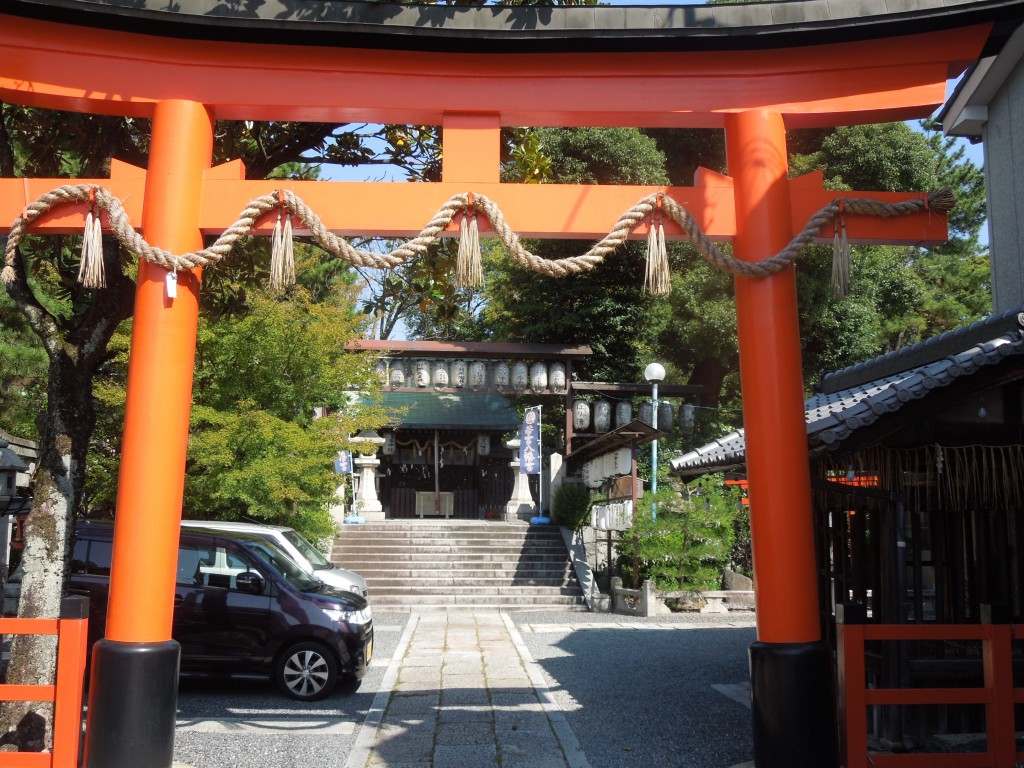
The front entrance of Wakamiya Hachiman-gu, aka Toki Jinja (Pottery Shrine), near Kiyomizu Temple in Kyoto. A guardian deity of pottery, and now sadly of cars it seems...
On a recent visit to Kiyomizu Temple here in Kyoto, I happened to come across Wakamiya Hachiman-gu, which also calls itself the Pottery Shrine. It’s on Gojo street, at the bottom of the slope leading up to the temple, and the area has long been associated with Kiyomizu pottery. Given its fame, I imagined the shrine would be something special, but sadly it had clearly seen better days.
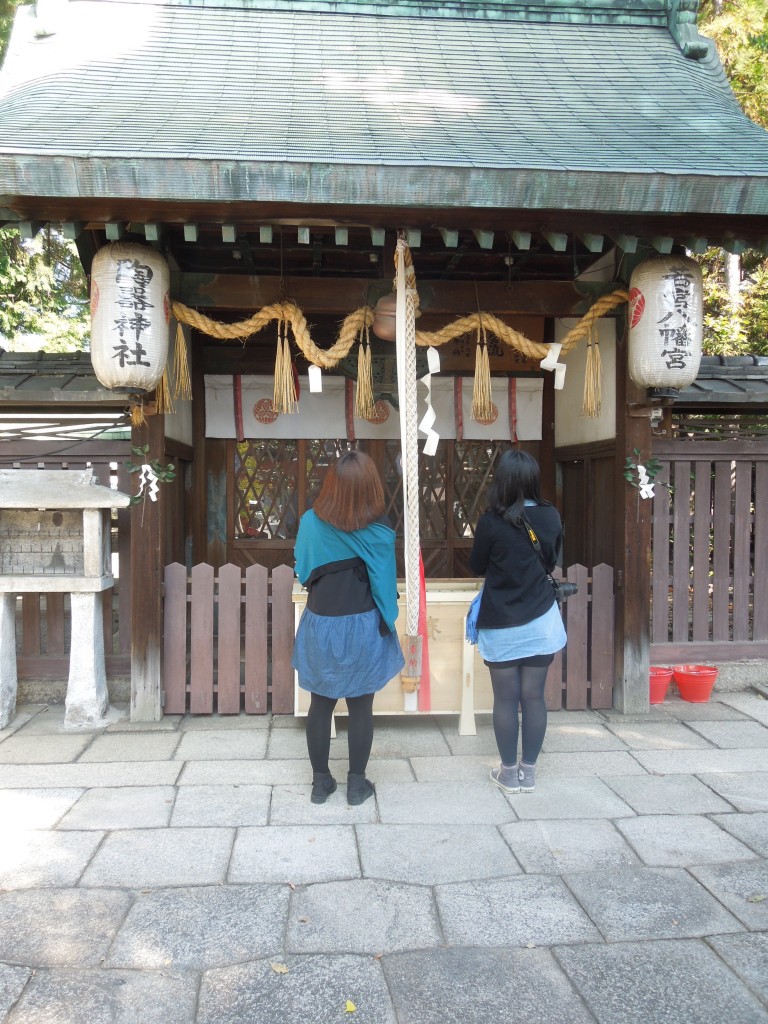
Two young women on their way to Kiyomizu Temple. According to the official prefectural website, it's a popular place to pray for an easy delivery as well as for good pottery.
Kiyomizu pottery once had a high reputation but has been on a steady decline over the past century. The shrine seems to have suffered with it. The courtyard was given over to a car park, the shrine office was shut, the buildings looked shabby, and at the back was an overgrown garden.
It’s said the shrine originated in 1053 with Minamoto no Yoriyoshi, one of the Genji warriors. it was located near Nishi Honganji and patronised by the Genji clan, later by the Ashikaga shoguns. But the shrine was wiped out in the Onin civil wars (1467-77), then forced into temporary locations before being finally reconstructed on the present site in 1654.
As you’d expect with a Hachiman shrine, the main deity is legendary Emperor Ojin and his putative parents, Emperor Chuai and Empress Jingu. Only in 1949, relatively recently, was the pottery kami Shiinetsu hiko no mikoto installed. (The kami appears to be an ancestral member of the Yamato clan.)
The shrine has a festival every summer to coincide with the Kiyomizu pottery event from Aug 7-10. Its most striking physical feature is a modern full length mirror in which to check the purity of one’s heart and soul. Set right before the Haiden, it is stark in design with none of the traditional elegance of Japanese pottery. Sad days for Shiinetsu hiko, it seems…
********************************************************************************************************************************************
For a useful article about Kiyomizu ceramics, see http://www.kyotoguide.com/ver2/thismonth/kiyomizu-ceramics.html
********************************************************************************************************************************************
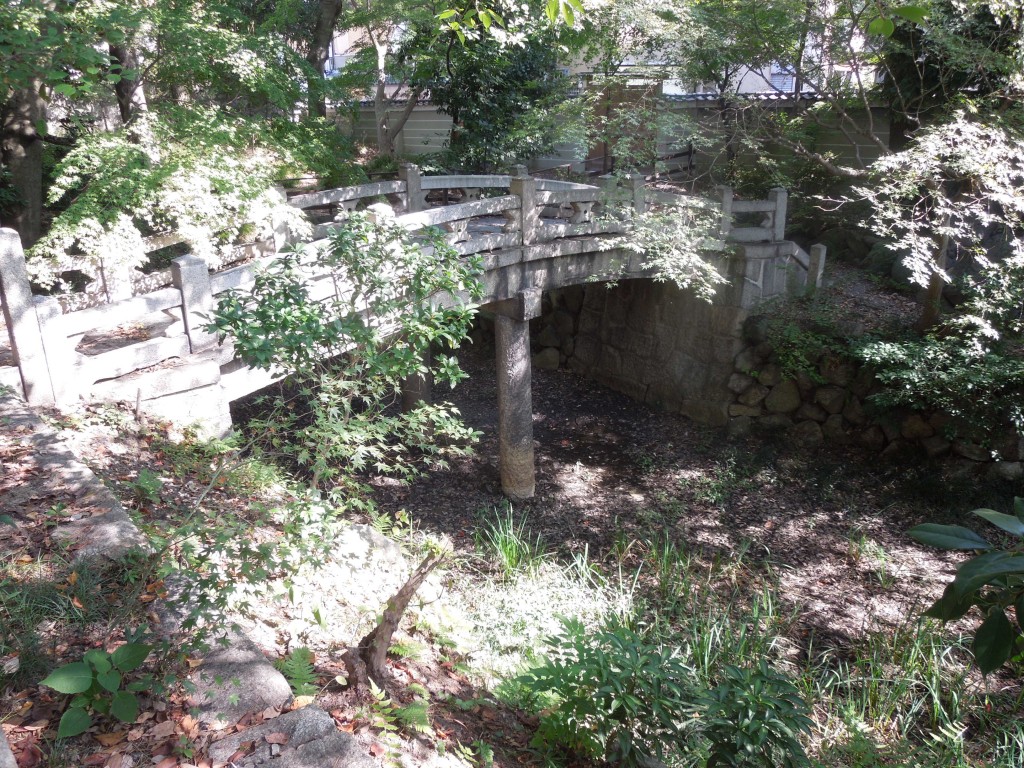
Neglected and unused at the back of the shrine is a garden waiting for a touch of water and a caring hand to be restored to its former glory
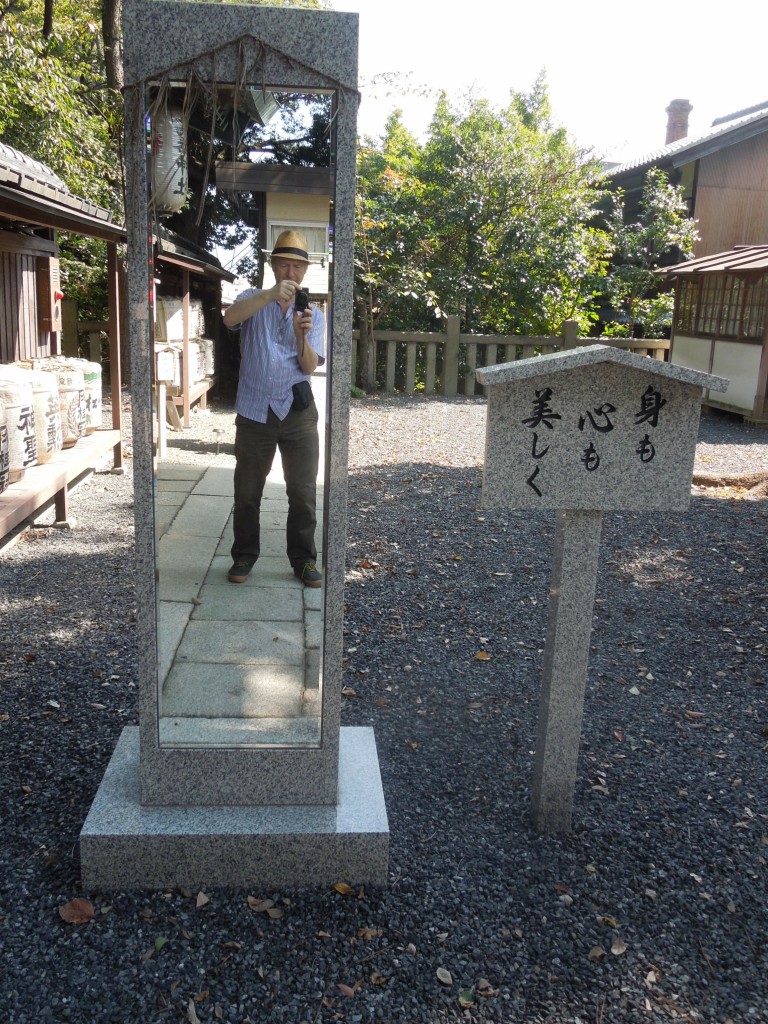
The rather startling mirror that stands in front of the Haiden worship hall.
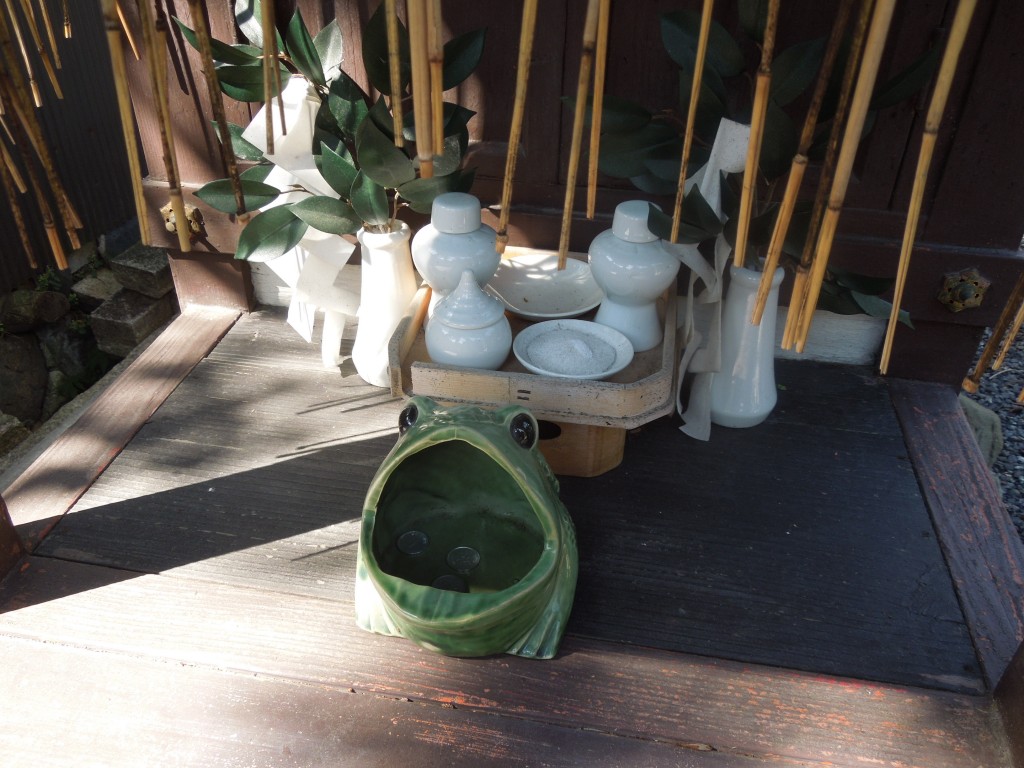
A hungry frog on one of the subshrines in the compound has clearly not been fed for some time
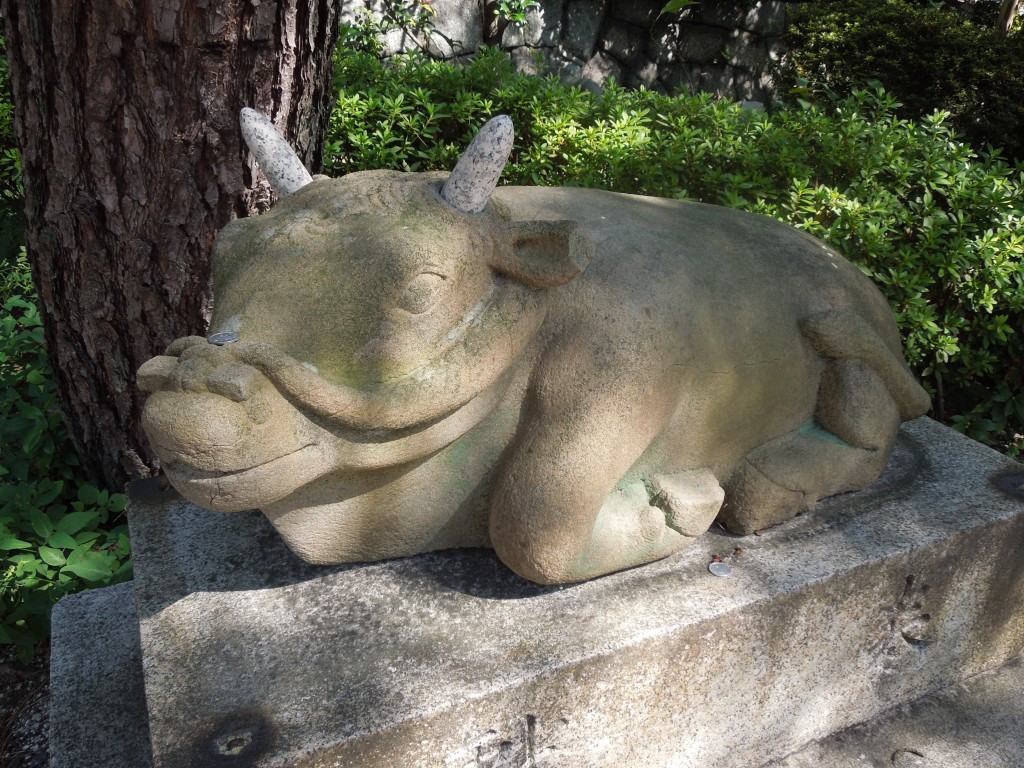
Meanwhile, the ox at the Tenmangu subshrine was happilly basking in the sunshine

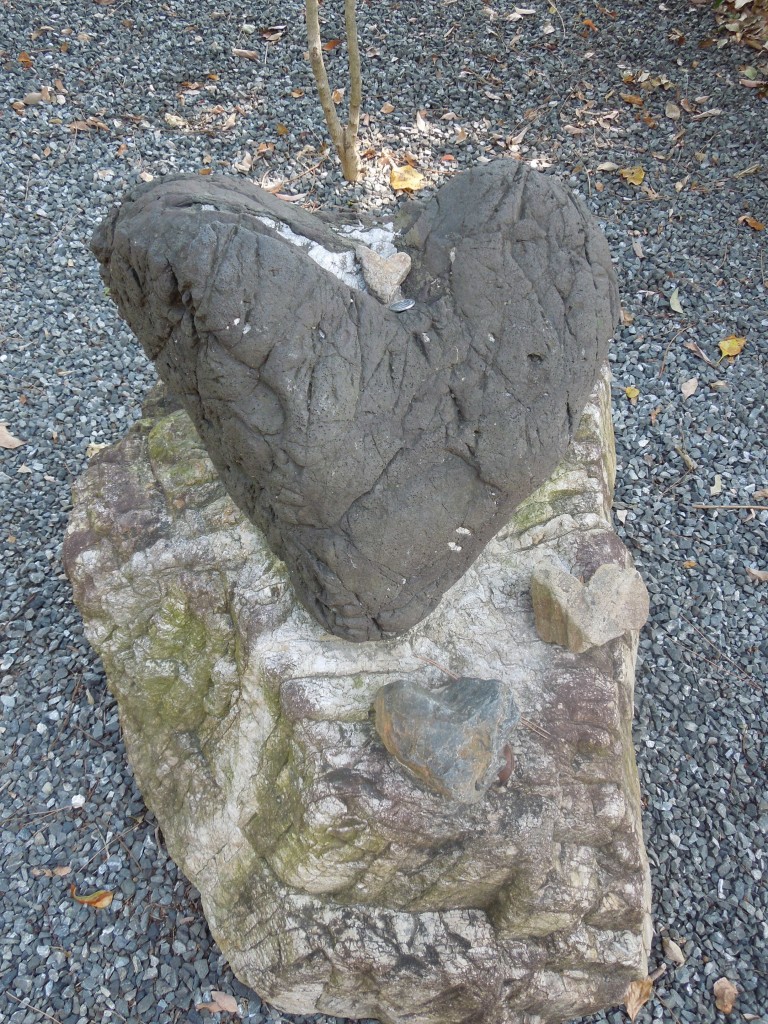
Quite sad indeed, a famous sacred space changed in parking. If the place is worth some money, then, they should use it to restore the garden.
The Yamato clan…what is their Kabane ? I saw the Yamato name several times, such as Yamato no aya, but it didn’t seemed linked with Shiinetsu hiko no Mikoto. And what of this prince god, is he one of the gods who followed Ninigi no Mikoto in the myth of Tenson Kôrin ?
Good day, and thank you for the input. There is a good website about the origin of names called tofugu, from which the following is taken: “To show the difference between the clans, they created a system known as the Ujikabane-seido. Under this system, the Yamato Kingdom would choose a clan name (氏/uji) for each clan, as well as a 姓 (kabane), which is understood to be an inherited aristocratic title attached to an uji name. These were given to nobles living in the capital and to the most powerful clans subordinate to the Yamato rule. As a side note, the emperor was the one who designated the Uji-Kabane for each clan, so the Emperor’s family did not require one. The Imperial family in Japan didn’t have a family name back then, and it is a custom that remains even today.”